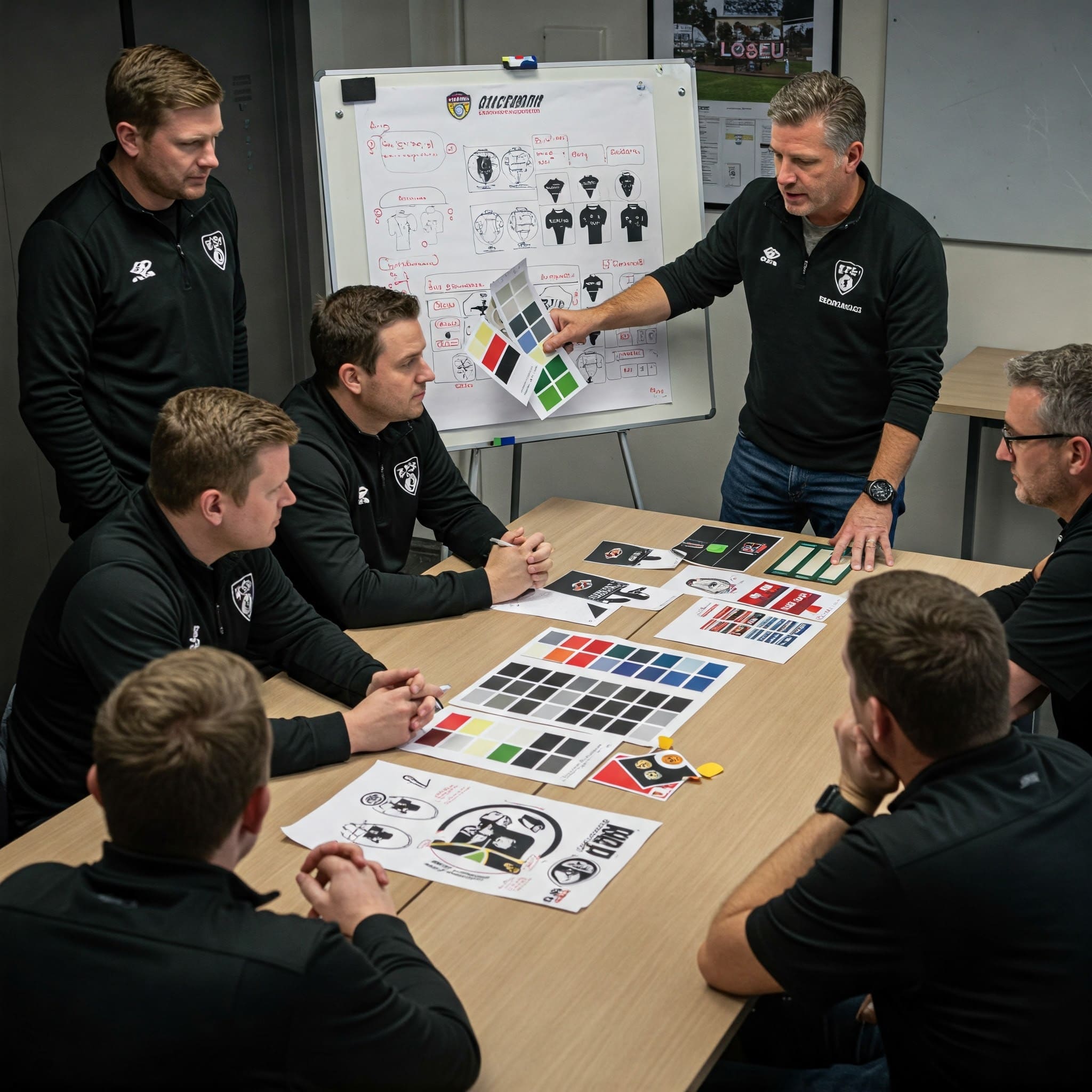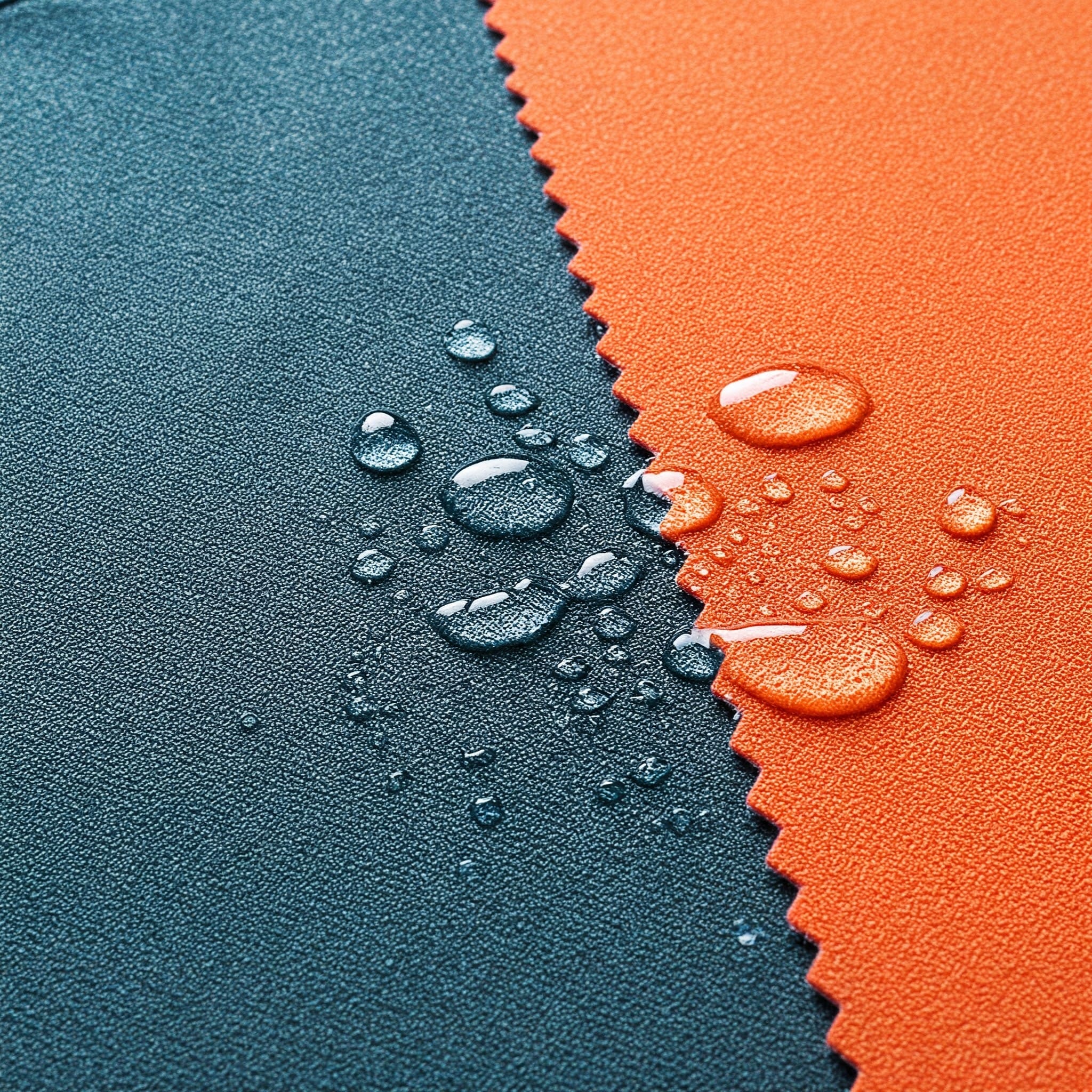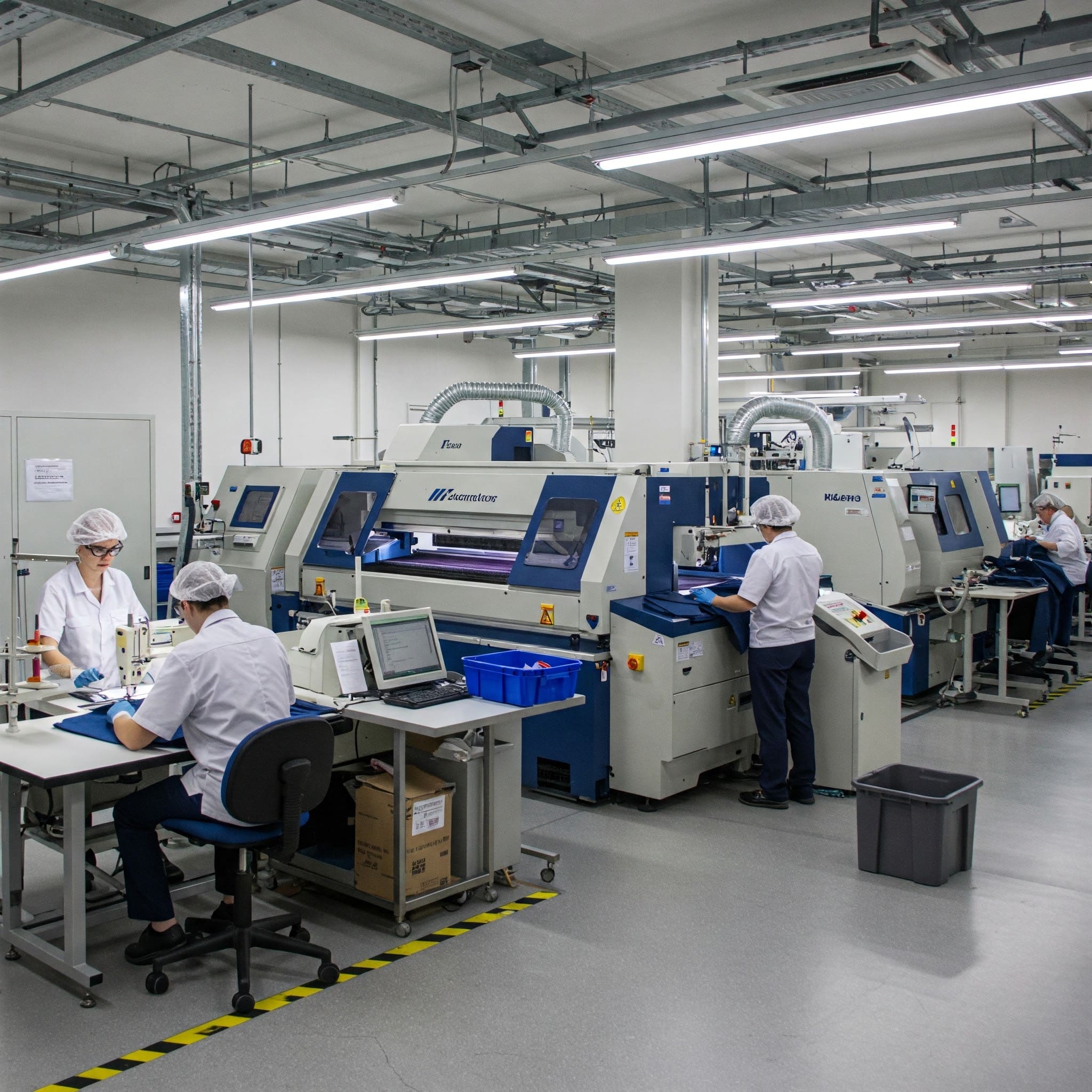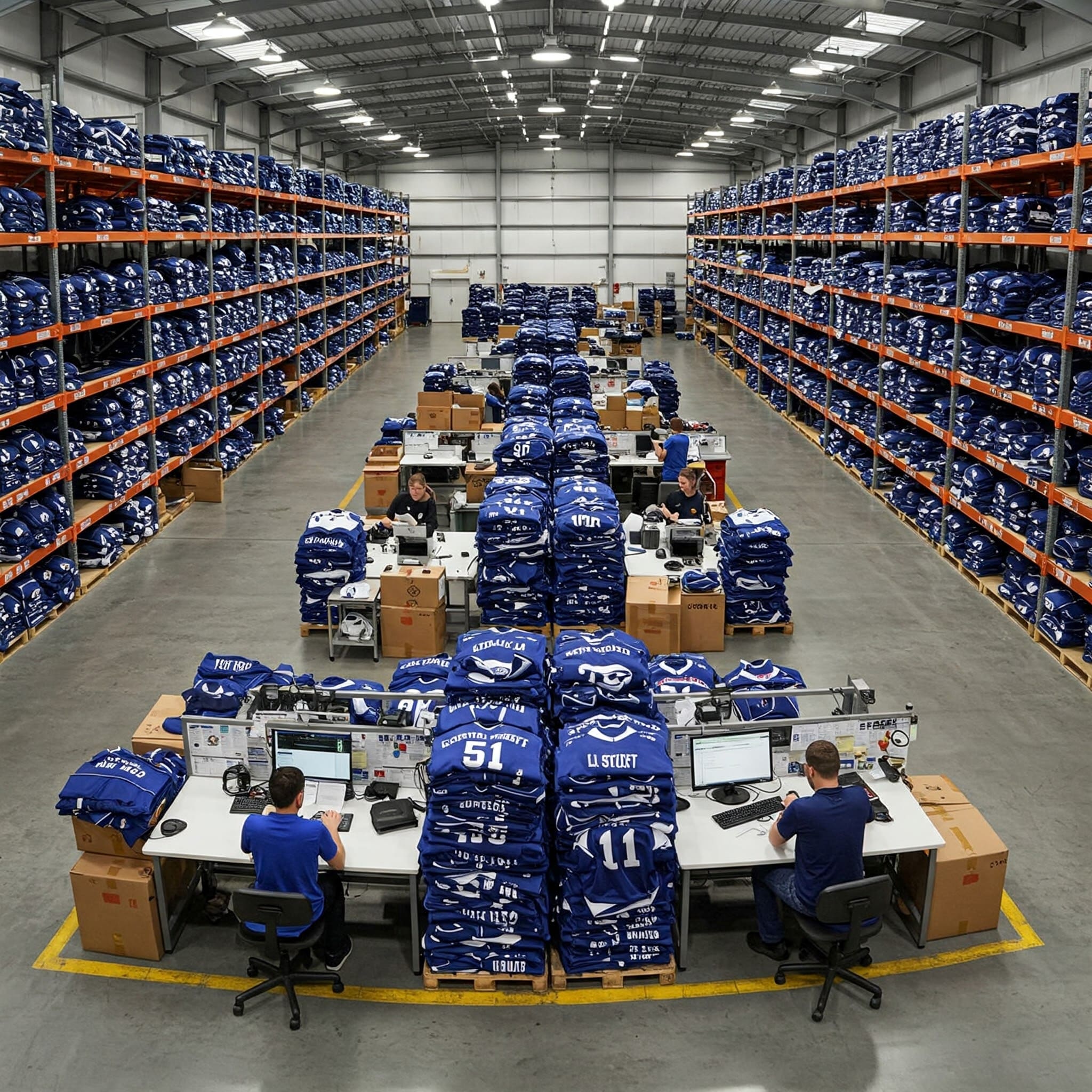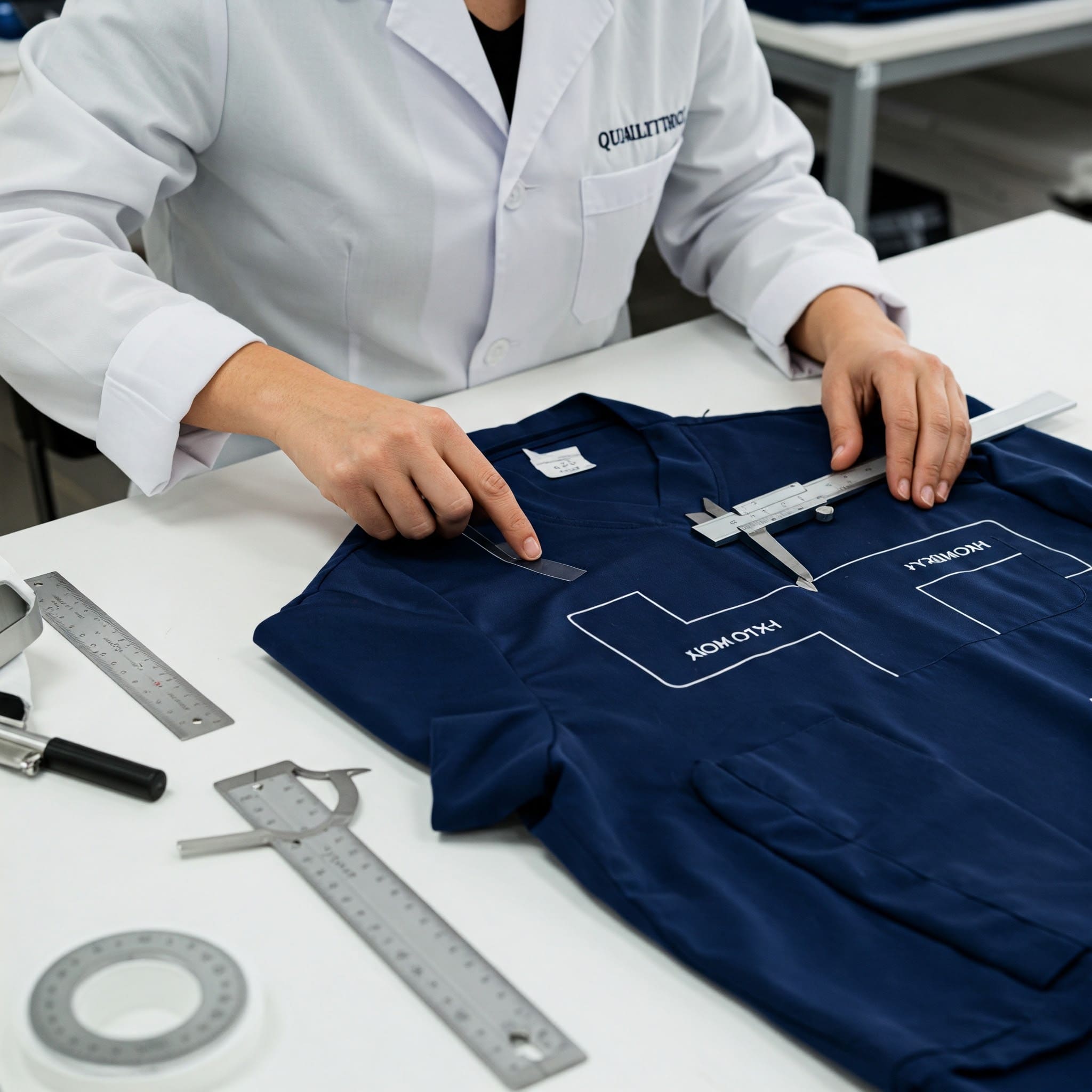Introduction
Launching team uniforms shouldn’t be a headache, but for many coaches, it quickly becomes one. Inconsistent sizing, missed deadlines, and poor quality materials can derail team morale right before the season starts – leaving you scrambling for solutions when you should be focusing on coaching.
Finding the right custom team uniforms supplier makes all the difference between a smooth, confidence-building process and a frustrating experience that costs more than just money. This 5-step guide cuts through the confusion, helping coaches and team managers navigate design considerations, material selection, and production logistics. Whether you’re outfitting a youth league or collegiate team, these practical steps will ensure your uniforms arrive on time, on budget, and ready to boost team performance and identity.
Defining Your Team’s Vision and Design Goals
Creating custom team uniforms is more than just picking colors and slapping on a logo. It’s about capturing your team’s spirit, values, and aspirations in wearable form. When teams establish clear design objectives from the start, the entire uniform creation process becomes more focused and ultimately more successful.
“A well-defined team vision serves as the foundation for custom uniform design, ensuring the final product authentically represents the team’s identity while meeting practical performance needs.”
Importance of Team Identity in Uniform Design
Your uniform is a visual representation of who you are as a team. It communicates your values, history, and aspirations without saying a word. Strong team sports uniforms create an immediate visual impact that players, opponents, and fans recognize instantly. This identity reinforces team unity and creates a sense of belonging among players.
When selecting a custom team uniforms supplier, prioritize those who take time to understand your team’s story. A quality supplier doesn’t just print what you ask for—they help translate your team’s essence into design elements that resonate with everyone who wears or sees the uniform.
Incorporating Player Input for Buy-In and Engagement
Players who feel heard during the design process are more likely to embrace the final product with pride. Consider surveying team members about comfort preferences, style elements, and personal connections to team symbols. This collaborative approach helps create personalized team uniforms that everyone feels invested in.
Remember that different positions may have different functional needs. Goalkeepers, for instance, might need more padding or freedom of movement than field players. A “slam dunk” approach to uniform design includes gathering input from players across all positions.
Key Branding Elements: Logos, Colors, and Themes
Your team’s visual identity hinges on three core elements: logos, colors, and overarching themes. Colors evoke emotional responses and should align with your team’s personality—bold and aggressive or calm and strategic. Logos should be distinctive and scalable, working equally well on jersey fronts and small accessories.
When considering how to choose a custom team uniforms supplier, evaluate their color-matching capabilities and logo reproduction quality. Request samples to ensure colors appear as expected across different materials and that detailed logo elements remain crisp.
Uniform Design Elements Importance Rating
| Design Element | Player Satisfaction Rating | Brand Recognition Impact | Performance Influence | Longevity Factor | Overall Importance |
|---|---|---|---|---|---|
| Team Colors | 87% | Very High | Medium | 4-5 years | Essential |
| Logo Design | 92% | Extremely High | Low | 7-10 years | Critical |
| Material Comfort | 95% | Low | Very High | 2-3 years | Essential |
| Custom Typography | 78% | High | None | 5-7 years | Important |
| Accent Details | 65% | Medium | Low | 3-4 years | Supplementary |
| Numbering Style | 72% | Medium | None | Full lifecycle | Standard |
Balancing Aesthetics with Functionality
The most visually striking uniforms fall short if they hamper performance. Effective custom team uniforms balance eye-catching design with practical functionality. This means selecting appropriate materials for your sport and climate, ensuring proper fit for movement, and including necessary features like pockets or protective elements.
A reputable custom team uniforms supplier should guide you through material options, explaining the benefits and limitations of each. Suppliers like Dec Garment offer collaborative design processes that help teams navigate these decisions, ensuring uniforms that look great and enhance performance.
When establishing your design goals, create a priority list that ranks aesthetics, durability, comfort, and performance features. This clarity helps your supplier understand what matters most to your team and where compromises can be made if necessary.
The most successful uniform projects begin with thorough preparation and clear vision. By taking time to define your design goals before approaching manufacturers, you’ll streamline the creation process and increase the likelihood of a result that truly represents your team’s identity.
Selecting Performance-Driven Materials
The fabric choices you make for your team uniforms directly impact athlete comfort, performance, and the longevity of your investment. With advances in textile technology, today’s options go far beyond traditional cotton—offering specialized features that can give your players a competitive edge while maintaining a professional appearance.
“The right fabric selection for team uniforms balances breathability, durability, moisture management, and comfort, significantly affecting athletic performance in various playing conditions.”
Overview of Popular Fabrics: Polyester Blends, Moisture-Wicking Options
Modern athletic wear relies heavily on synthetic fabrics engineered specifically for performance. Polyester dominates the market due to its versatility, durability, and ability to maintain color vibrancy even after repeated washing. When working with a custom team uniforms supplier, you’ll typically encounter several variations of performance fabrics.
Microfiber polyester offers exceptional softness while maintaining durability. Poly-spandex blends provide the stretch athletes need for unrestricted movement. Mesh variations deliver maximum ventilation for hot conditions. Each material brings unique properties that should align with your sport’s specific demands.
Benefits of Breathable and Durable Materials for Athletes
Performance-driven materials do more than just look good—they actively support athletic achievement. Moisture-wicking fabrics pull sweat away from the skin, allowing it to evaporate quickly and keeping athletes dry. This technology helps regulate body temperature, preventing both overheating and the chilling effect of sweat-soaked clothing during breaks.
When evaluating custom sports apparel, consider how materials perform under stress. Athletes need uniforms that withstand diving, sliding, stretching, and constant washing without losing shape or functionality. A “game-changer” in your material selection process is understanding how fabric technology can help your team maintain peak performance throughout competition.
Performance Fabric Comparison for Team Sports
| Fabric Type | Moisture Management | Durability Rating | Breathability Score | Weight (oz/yd²) | Best For |
|---|---|---|---|---|---|
| 100% Polyester | Excellent | High (8/10) | Good (7/10) | 4.0-5.5 | Most team sports |
| Poly-Spandex Blend | Very Good | Medium-High (7/10) | Good (7/10) | 5.0-7.0 | Sports requiring stretch |
| Mesh Polyester | Excellent | Medium (6/10) | Excellent (9/10) | 3.5-4.5 | Hot weather conditions |
| Double-Knit Polyester | Good | Very High (9/10) | Moderate (6/10) | 7.0-9.0 | High-contact sports |
| Poly-Cotton Blend | Fair | Medium (5/10) | Good (7/10) | 4.5-6.5 | Casual team wear |
| Microfiber Polyester | Excellent | High (8/10) | Very Good (8/10) | 3.8-5.0 | Precision sports |
Material Considerations for Different Sports and Climates
Different sports place unique demands on uniforms. Football requires durable, snag-resistant fabrics that can withstand tackles, while basketball players benefit from lightweight, highly breathable materials that move freely during jumps and quick direction changes. When researching the best suppliers for custom sports uniforms, prioritize those with sport-specific expertise.
Climate considerations are equally important. Teams in humid regions need maximum moisture-wicking capabilities, while those in colder areas might benefit from layering options. Athletic wear suppliers should provide guidance on seasonal variations and help you select appropriate materials for your geographic region and playing season.
Evaluating Fabric Certifications and Quality Standards
Quality assurance in performance fabrics comes through standardized testing and certification. Look for custom team uniforms suppliers who work with fabrics certified by recognized organizations like OEKO-TEX® (for harmful substances testing) or bluesign® (for sustainable production). These certifications ensure materials meet specific performance and safety standards.
Ask potential suppliers about their quality testing procedures. Reputable manufacturers like Dec Garment maintain rigorous quality control measures, testing fabrics for colorfastness, pilling resistance, and dimensional stability after washing. This attention to material quality translates directly to uniform performance and longevity.
By prioritizing performance-driven materials in your team uniform selection, you invest in both your athletes’ comfort and their ability to perform at their best. The right fabric choice becomes a competitive advantage that supports players through every challenge they face on the field or court.
Choosing the Right Supplier for Customization
Finding the perfect partner for your team’s uniform needs goes beyond comparing price points. The supplier you select will significantly impact the quality, timeliness, and overall success of your uniform project. A thoughtful selection process ensures you’ll work with professionals who understand your vision and can deliver uniforms that make your team proud.
“The relationship between teams and their custom uniform supplier directly influences uniform quality, on-time delivery, and the overall satisfaction with the final product.”
Key Criteria for Supplier Selection: Experience, Customization Options
When evaluating a custom team uniforms supplier, start by assessing their industry experience. Established suppliers have refined their processes through years of trial and error, resulting in more efficient production and fewer complications. Look for companies with a proven track record in your specific sport, as they’ll better understand your unique requirements.
Customization capabilities vary dramatically between suppliers. Some offer basic logo placement and limited color options, while others provide comprehensive uniform customization services including pattern design, specialty fabrics, and advanced decoration techniques. Request detailed information about available customization options and ask to see examples of their most complex projects.
Benefits of Suppliers with In-House Design Teams
Suppliers with dedicated design teams offer significant advantages over those who outsource design work. In-house designers develop specialized knowledge about performance requirements, fabric limitations, and decoration techniques specific to their production capabilities. This expertise ensures your design concepts translate effectively to finished garments.
These teams also typically provide sports team branding solutions beyond just uniforms—creating cohesive looks across warmup gear, travel attire, and fan merchandise. A “top-notch” design team can elevate your initial concepts into professional-grade designs that perfectly represent your team’s identity while ensuring technical requirements are met.
Supplier Selection Criteria Comparison Matrix
| Selection Criteria | Budget Suppliers | Mid-Range Suppliers | Premium Suppliers | Industry Standard | Critical Importance |
|---|---|---|---|---|---|
| Years in Business | 1-3 years | 5-10 years | 10+ years | 7+ years | High |
| Minimum Order Quantity | 25-50 units | 12-24 units | 5-10 units | 12 units | Medium |
| Production Turnaround | 6-8 weeks | 3-5 weeks | 2-3 weeks | 4 weeks | Very High |
| Design Support Hours | 1-2 hours | 3-5 hours | Unlimited | 3-4 hours | High |
| Quality Control Steps | 1-2 checks | 3-4 checks | 5+ checks | 3-4 checks | Critical |
| Fabric Options | 2-3 options | 5-8 options | 10+ options | 6+ options | High |
Comparing Local vs. International Suppliers
Local suppliers offer advantages in communication, shipping timelines, and relationship building. Face-to-face meetings can streamline the design process and allow hands-on evaluation of materials. However, domestic production often comes with higher price points, potentially limiting your affordable custom team uniforms options.
International suppliers like Dec Garment typically offer more competitive pricing while maintaining high quality standards through advanced manufacturing facilities. With proper planning for longer shipping timelines, international partners with established communication systems can provide excellent value. Modern technology has simplified international partnerships, with video meetings and digital proofing reducing the distance barrier.
Red Flags to Avoid: Hidden Fees, Limited Design Support
Watch for warning signs when evaluating a custom team uniforms supplier. Vague pricing structures often hide fees for design revisions, color matches, or shipping that appear later in the process. Request comprehensive quotes that outline all potential costs upfront.
Limited design support indicates potential communication challenges throughout your project. Quality suppliers invest in relationship-building from the start, providing attentive service during the design phase. If a supplier seems reluctant to discuss design revisions or clarify technical details, consider it a warning sign of frustrations to come.
Ultimately, choosing the right supplier requires balancing cost considerations with quality, service, and reliability factors. The best partnerships develop when teams find suppliers whose capabilities align precisely with their unique needs, creating a foundation for successful uniform projects season after season.
Streamlining Production and Logistics
The journey from design approval to receiving your team’s uniforms involves multiple production stages and logistical considerations. Understanding this process helps you set realistic expectations and plan effectively to ensure your team is properly outfitted before the season begins. With proper coordination, you can avoid last-minute rushes and unexpected delays that might impact your team’s preparation.
“Effective logistics management in uniform production requires backward planning from your needed delivery date, accounting for shipping, production time, and potential delays at each stage.”
Understanding Production Timelines: Typical 2-4 Week Cycles
Custom uniform production follows a sequential process that requires time for each stage. After design approval, fabric must be cut, decorated with team graphics, sewn together, quality checked, packaged, and shipped. While rush orders are sometimes possible, they typically incur premium charges and may compromise quality control steps.
When evaluating how to choose a custom team uniforms supplier, ask detailed questions about their standard production timeline. Experienced suppliers provide transparent estimates based on your specific order requirements rather than vague promises. Request a production schedule that outlines when you can expect proofs, production updates, and shipping confirmation.
Coordinating Bulk Shipments for Cost Efficiency
Shipping costs can significantly impact your overall budget, especially for team sports uniforms ordered in quantity. Consolidating your order into a single shipment typically proves more economical than multiple small deliveries. This approach also ensures consistent quality across all uniforms and simplifies the distribution process to team members.
Consider your internal distribution process when planning deliveries. If uniforms need to be individually packaged with specific player names and numbers, communicate these requirements early. Many custom sports apparel providers offer specialized packaging services that can save you considerable time and organization effort once items arrive.
Production and Shipping Timeline Comparison
| Production Stage | Economy Timeline | Standard Timeline | Rush Timeline | Cost Impact | Quality Impact |
|---|---|---|---|---|---|
| Design Approval | 5-7 days | 3-5 days | 1-2 days | No change | Medium risk |
| Material Sourcing | 7-10 days | 3-7 days | 1-3 days | +10-15% | Low risk |
| Production Setup | 3-5 days | 2-3 days | 1 day | +5-10% | Low risk |
| Manufacturing | 10-14 days | 7-10 days | 3-5 days | +20-30% | High risk |
| Quality Control | 3-5 days | 2-3 days | 1 day | +15-20% | Critical risk |
| Shipping Method | Ground (5-7 days) | Express (2-3 days) | Overnight | +100-300% | No risk |
Importance of Clear Communication with Suppliers
Establishing open communication channels with your custom team uniforms supplier prevents misunderstandings and keeps your order on track. Request a dedicated contact person who understands your project requirements and can provide regular updates. Clear communication becomes especially crucial when working with international manufacturers where time zones differences can impact response times.
Document all key decisions and confirmations in writing, even when discussions happen by phone. This creates a reference point for both parties and helps resolve any discrepancies that might arise later. A “slam dunk” approach to project management includes regular check-ins at predetermined milestones to ensure everything remains on schedule.
Mitigating Delays: Planning for Contingencies
Even with careful planning, unexpected challenges can arise during production. Fabric availability, shipping delays, and production backlogs can impact your timeline. Build buffer time into your schedule whenever possible, especially during peak ordering seasons like pre-fall when many teams place orders simultaneously.
Consider ordering a small quantity of extra uniforms to account for sizing issues, damage, or late additions to your team roster. While this requires additional investment upfront, it can prevent significant headaches if emergency replacements become necessary during the season. Reliable suppliers like Dec Garment offer contingency planning assistance based on their extensive experience with sports team orders.
By approaching your uniform project with a comprehensive understanding of production requirements and potential challenges, you create the foundation for a smooth process from initial design to final delivery—ensuring your team steps onto the field looking professional and unified.
Evaluating Supplier Quality and Reliability
Finding a dependable partner for your team’s uniform needs requires looking beyond flashy websites and initial price quotes. The right supplier relationship can save you from quality disappointments, missed deadlines, and communication frustrations. By thoroughly evaluating potential manufacturing partners before committing, you establish a foundation for success that benefits your team for seasons to come.
“The most important factor in custom uniform satisfaction is not price or design capabilities, but the supplier’s consistent quality control systems and proven reliability record.”
Assessing Supplier Experience and Track Record
A supplier’s history in the industry reveals much about their stability and expertise. Established custom team uniforms suppliers have weathered market changes, refined their processes, and built the infrastructure necessary for consistent results. While newer companies may offer competitive pricing, experienced manufacturers typically deliver greater reliability throughout the production process.
Request specific information about a supplier’s experience with your sport and uniform type. Athletic wear suppliers who regularly produce basketball jerseys, for instance, understand the specific performance requirements and decoration techniques required. This specialized knowledge translates directly to higher quality garments that meet your team’s needs.
Importance of Quality Control Processes and Certifications
Quality control systems separate professional manufacturers from amateur operations. Request detailed information about a supplier’s quality assurance procedures, including how they inspect incoming materials, monitor production, and evaluate finished garments. The best suppliers for custom sports uniforms maintain formal quality processes at every production stage.
Industry certifications provide objective verification of a supplier’s claims. Look for ISO 9001 certification (quality management systems), WRAP certification (ethical production practices), or sport-specific compliance certifications. These third-party validations indicate a company’s commitment to maintaining consistent standards that go beyond “cutting corners” to maximize profits.
Quality Control Statistics by Supplier Category
| Quality Metric | Budget Suppliers | Mid-Tier Suppliers | Premium Suppliers | Industry Average | Dec Garment Standard |
|---|---|---|---|---|---|
| Defect Rate | 5-8% | 2-4% | 0.5-1.5% | 3.2% | <0.8% |
| Color Consistency | ±5-7 Delta E | ±3-4 Delta E | ±1-2 Delta E | ±3.5 Delta E | ±1.5 Delta E |
| Size Variance Tolerance | ±1.5 inches | ±0.75 inches | ±0.25 inches | ±0.8 inches | ±0.3 inches |
| Seam Strength Testing | Rarely performed | Sample testing | Regular testing | Batch testing | Per-lot testing |
| Wash Test Cycles | 1-3 cycles | 5-10 cycles | 15-25 cycles | 8 cycles | 20 cycles |
| Quality Inspection Points | 10-15 points | 20-30 points | 40+ points | 25 points | 45 points |
Leveraging Customer Reviews and Case Studies
Past customer experiences provide valuable insights into a supplier’s real-world performance. Look beyond testimonials on the company website, which naturally highlight only positive experiences. Search for independent reviews, sports forums discussions, and social media comments that mention the supplier. These unfiltered perspectives often reveal important information about consistency and customer service.
Case studies demonstrating a supplier’s work with similar organizations offer concrete evidence of capabilities. When evaluating a custom team uniforms supplier, ask for examples of projects comparable to yours in scale, complexity, and sport type. Quality suppliers proudly showcase their successful partnerships and the challenges they’ve overcome in delivering personalized team uniforms.
Building a Long-Term Relationship with Your Supplier
The most successful uniform programs develop through ongoing partnerships rather than one-time transactions. Reliable suppliers invest in understanding your organization’s unique needs, storing your design files, and creating efficient reordering systems. This institutional knowledge becomes increasingly valuable over time, reducing the effort required for future uniform orders.
Communication expectations form the foundation of these relationships. Establish clear points of contact, preferred communication methods, and expected response times at the beginning of your partnership. Reliable suppliers like Dec Garment assign dedicated account representatives who maintain continuity and develop specialized knowledge about your team’s preferences.
By thoroughly evaluating potential suppliers before committing, you protect your organization from costly mistakes and position your team for a professional, stress-free uniform experience that enhances both appearance and performance.
Conclusion
After working with hundreds of teams over the years, I’ve seen firsthand how the right uniforms can transform a team’s identity and performance. When you follow these five steps—from defining your vision to evaluating supplier reliability—you create a foundation for success that extends well beyond just looking good on game day.
What strikes me most is how often coaches underestimate the impact of quality teamwear on player confidence and team cohesion. The time you invest in finding a trustworthy partner who understands your vision pays dividends throughout the entire season. From consistent sizing to on-time delivery, these details matter tremendously when you’re focused on coaching rather than uniform headaches.
Whether you’re outfitting a youth league or collegiate team, remember that your uniform supplier should feel like an extension of your coaching staff—reliable, responsive, and committed to your success. Finding that kind of partnership is a **”game-changer”** that makes all the difference between constant frustration and a seamless teamwear experience that lets you focus on what truly matters: developing your athletes and winning games.
FAQ
-
Q1: What should I consider when choosing a custom team uniforms supplier?
A1: When selecting a custom team uniforms supplier, consider their design flexibility, product quality, turnaround time, and customer service. It’s important to ensure that they provide options for team input and have a good selection of materials.
-
Q2: How can I customize my team uniforms?
A2: You can customize your team uniforms by choosing colors, designs, logos, and player names. Most suppliers offer online design tools that allow you to visualize your uniforms before ordering.
-
Q3: What types of sports uniforms can I get from a custom supplier?
A3: Custom uniform suppliers offer a wide range of sports uniforms, including basketball, football, soccer, baseball, and more. Each sport typically has unique styles and requirements.
-
Q4: What is the average cost of custom team uniforms?
A4: The cost of custom team uniforms varies widely based on factors such as fabric choice, design complexity, and order quantity. Expect prices to range from $20 to $100 per uniform.
-
Q5: How long does it take to receive custom team uniforms?
A5: Delivery times for custom team uniforms usually range from 2 to 6 weeks, depending on the supplier’s production time and your order’s complexity.
-
Q6: Are there specific suppliers for custom sports apparel?
A6: Yes, there are many suppliers specializing in custom sports apparel. Look for those with a proven track record of quality and service, such as Allen Sportswear or Champion Teamwear.
-
Q7: Can I order team uniforms for different sports from the same supplier?
A7: Most custom uniform suppliers offer products for various sports, allowing you to order uniforms for different teams or leagues from a single source.
-
Q8: What materials are commonly used in custom team uniforms?
A8: Common materials for custom team uniforms include polyester, nylon, and blends. These fabrics are chosen for their durability, moisture-wicking properties, and comfort.
External Links
- Custom Designed Apparel and Sportswear
- Team Sports Uniforms | Allen Sportswear
- Wholesale Team Uniforms Factory in USA
- Custom Team Sports Uniforms Manufacturer
- Custom Team Sportswear & Leisurewear | Bespoke Sports Kit
- Full Custom Team Uniforms | Decker Sports
- Team Uniforms – BSN SPORTS
- Custom Team Jerseys | Team Sportswear

